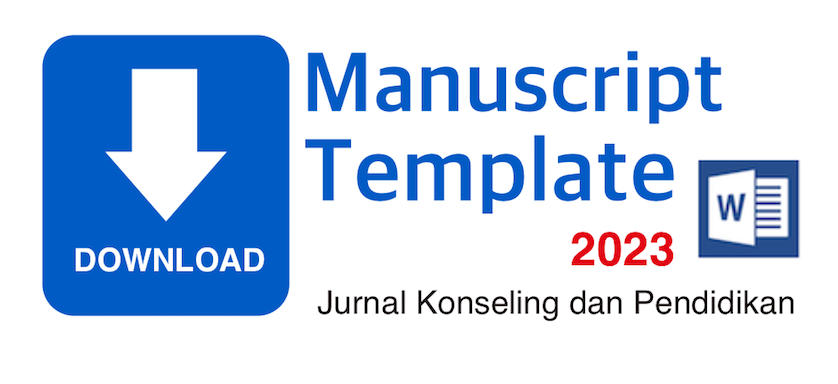Analisis komparatif self confidence siswa kelas khusus dan kelas reguler
 ),
), (1) Universitas Muria Kudus
(2) Universitas Muria Kudus
 Corresponding Author
Corresponding Author
DOI : https://doi.org/10.29210/158200
Full Text:
 Language : en
Language : en
Abstract
References
Aristiani, R. (2016). Meningkatkan Percaya Diri Siswa Melalui Layanan Informasi BErbantuan Audiovisual. Konseling Gusjigang, 2(2), 182–189. jurnal.umk.ac.id
Benabou, R. (2014). Self-Confidence And Personal Motivation. Quarterly Journal of Economics, June. https://doi.org/10.1162/003355302760193913
Bolívar-Cruz, A., Verano-Tacoronte, D., & Galván-Sánchez, I. (2018). Do self-efficacy, incentives and confidence in public speaking influence how students self-assess? Cultura y Educacion, 30(3), 528–555. https://doi.org/10.1080/11356405.2018.1488420
Cimermanová, I. (2018). The effect of learning styles on academic achievement in different forms of teaching. International Journal of Instruction, 11(3), 219–232. https://doi.org/10.12973/iji.2018.11316a
Deni, A. U. (2016). KONSEP KEPERCAYAAN DIRI REMAJA PUTRI. Educatio, Jurnal Pendidikan Indonesia, 2(2), 43–52. http://jurnal.iicet.org
Dyesi Kumalasari. (2017). Konsep Behavioral Therapy dalam Meingkatkan Rasa Percaya Diri Pada Siswa Terisolir. Hisbah: Jurnal Bimbingan Konseling Dan Dakwah Islam, 14(1), 15–24. ejournal.uin-suka.ac.id
Federičová, M., Pertold, F., & Smith, M. L. (2018). Children left behind: self-confidence of pupils in competitive environments. Education Economics, 26(2), 145–160. https://doi.org/10.1080/09645292.2017.1395811
Fitri, E., Zola, N., & Ifdil, I. (2018). Profil Kepercayaan Diri Remaja serta Faktor-Faktor yang Mempengaruhi. JPPI (Jurnal Penelitian Pendidikan Indonesia), 4(1), 1. https://doi.org/10.29210/02017182
Flowers, J., & Marston, A. (1972). Modification of low self-confidence in elementary school children. Journal of Educational Research, 66(1), 30–34. https://doi.org/10.1080/00220671.1972.10884394
Gulam Abbas and Allah Nawaz. (2020). LINKING EMPLOYEE MOTIVATION WITH TEAMWORK-SPIRIT: THE INFLUENCE OF SOCIAL SKILLS AND SELF-CONFIDENCE. Gomal University Journal of Research, 36(1), 52–62.
Gürler, İ. (2015). Correlation between Self Confidence and Speaking Skill. Curr Res Soc Sci, 1(2), 14–19.
Hariko, R., & Ifdil, I. (2017). Analisis Kritik Terhadap Model Kipas; Konseling Intensif Progresif Adaptif Struktur. Jurnal Konseling Dan Pendidikan, 5(2), 109. https://doi.org/10.29210/120500
Herawati, E., Somatanaya, A. A. G., & Hermanto, R. (2019). Hubungan Self-Confindence dan Kemampuan Berpikir Kreatif Matematik Peserta Didik yang diajar Menggunakan Model Elicting Activities (MEAs). Journal of Authentic Research on Mathematics Education (JARME), 1(1), 1–9. http://jurnal.unsil.ac.id/index.php/jarme/article/view/621
Hooper, C. (2018). The Mahabharata. Psychological Perspectives, 61(1), 76–91. https://doi.org/10.1080/00332925.2018.1422931
Jannah, M. (2017). Remaja Dan Tugas-Tugas Perkembangannya Dalam Islam. Psikoislamedia : Jurnal Psikologi, 1(1), 243–256. https://doi.org/10.22373/psikoislamedia.v1i1.1493
Kappes, H. B., Fasolo, B., Han, W., Barnes, J., & Ter Meer, J. (2019). Poor peer work does not boost student confidence. Journal of Behavioral Decision Making, January, 1–12. https://doi.org/10.1002/bdm.2148
Kastrup, H., Mallow, J. V, Lestari, H. P., Hartoto, S., Khory, F. D., & Prakoso, B. B. (2018). The effectiveness of collaborative problem based physics learning ( CPBPL ) model to improve student ’ s self-confidence on physics learning The effectiveness of collaborative problem based physics learning ( CPBPL ) model to improve s tudent ’ s self-con. IOP Conf. Series: Journal of Physics: Conf. Series 997 (2018) 012008. https://doi.org/doi :10.1088/1742-6596/997/1/012008
Komara, I. B. (2016). Hubungan antara Kepercayaan Diri dengan Prestasi Belajar dan Perencanaan Karir Siswa. Jurnal Psikopedagogia, 5(1), 33–42. journal.uad.ac.id
Lawal, A. M., Idemudia, E. S., & Adewale, O. P. (2017). Academic self-confidence effects on test anxiety among nigerian university students. Journal of Psychology in Africa, 27(6), 507–510. https://doi.org/10.1080/14330237.2017.1375203
Leal, P. C., Goes, T. C., da Silva, L. C. F., & Teixeira-Silva, F. (2017). Trait vs. state anxiety in different threatening situations. Trends in Psychiatry and Psychotherapy, 39(3), 147–157. https://doi.org/10.1590/2237-6089-2016-0044
Lestari, T., Mulyana, E. H., Nurzaman, I., Gandana, G., & Apriyaningsih, E. (2019). Exploring the integrating potentials of role playing with YouTube in building student’s self confidence. Journal of Physics: Conference Series, 1318(1). https://doi.org/10.1088/1742-6596/1318/1/012014
Liu, X., Xu, Y., Montes, R., & Herrera, F. (2019). Social network group decision making: Managing self-confidence-based consensus model with the dynamic importance degree of experts and trust-based feedback mechanism. Information Sciences, 505, 215–232. https://doi.org/https://doi.org/10.1016/j.ins.2019.07.050
Marjanti, S. (2015). Upaya Meningkatkan Rasa Percaya Diri Melalui Konseling Kelompok Bagi Siswa X IPS 6 SMA 2 BAE Kudus. Konseling Gusjigang, 1(2). jurnal.umk.ac.id
Nadiah, & Arina, I. (2019). The Students’ Self-Confidence in Public Speaking. ELITE Journal, 1(1), 1–11. https://www.elitejournal.org/index.php/ELITE
Passiatore, Y., Pirchio, S., Oliva, C., Panno, A., & Carrus, G. (2019). Self-efficacy and anxiety in learning English as a Foreign language: Singing in class helps speaking performance. Journal of Educational, Cultural and Psychological Studies, 2019(20), 121–138. https://doi.org/10.7358/ecps-2019-020-passi
Pettersson, C. (2018). Psychological well-being, improved self-confidence, and social capacity: bibliotherapy from a user perspective. Journal of Poetry Therapy, 31(2), 124–134. https://doi.org/10.1080/08893675.2018.1448955
Pranoto, H. (2016). Upaya Meningkatkan Percaya diri Siswa Melalui Layanan Bimbingan Kelompok di SMA Negeri 1 Sungkai Utara Lampung Utara. Lentera Jurnal Pendidikan Pusat Penelitian LPPM UM Metro, 1(1), 100–111. https://doi.org/http://dx.doi.org/10.24127/jlplppm.v1i1.108
Ramadhani, T. N., Putrianti, F. G., Psikologi, F., & Tamansiswa, U. S. (2014). Hubungan antara kepercayaan diri dengan citra diri pada remaja akhir. Jurnal UST Jogja, 4(2), 22–32.
Schneider, R., Lotz, C., & Sparfeldt, J. R. (2018). Smart, confident, interested: Contributions of intelligence, self-concept, and interest to elementary school achievement. Learning and Individual Differences, 62, 23–35. https://doi.org/https://doi.org/10.1016/j.lindif.2018.01.003
Vanaja, Y., & Geetha, D. (2017). A Study on Locus of Control and Self Confidence of High School Students. International Journal of Research Granthaalayah, 5, 598–602. https://doi.org/10.5281/zenodo.841186
Vrij, A., & Bush, N. (2000). Differences in suggestibility between 5-6 and 10-11 year olds: The relationship with self confidence. Psychology, Crime and Law, 6(2), 127–138. https://doi.org/10.1080/10683160008410837
Wahyu Nanda Eka Saputra, H. P. (2018). Meningkatkan Percaya Diri Siswa melalui Teknik Cognitive Defusion. Jurnal Kajian Bimbingan Dan Konseling, 3(1), 14–21. http://journal2.um.ac.id/index.php/jkbk
Walid, A., Gamal, R., Kusumah, T., Doktoral, P., & Doktoral, P. (2015). Pengaruh Rasa Percaya Diri Terhadap Motivasi Berprestasi Siswa pada Mata Pelajaran IPA. Repository Iain Bengkulu, 217–226.
Zufriadi Tanjung, dkk. (2018). Menumbuhkan Kepercayan Diri Siswa. Jurnal Riset Tindakan Indonesia, 2(2), 2–6. Riset, J., Indonesia, T., & Artikel, I. (2018). Menumbuhkan Kepercayan Diri Siswa. Jurnal Riset Tindakan Indonesia, 2(2), 2–6.
 Article Metrics
Article Metrics
 Abstract Views : 734 times
Abstract Views : 734 times
 PDF Downloaded : 321 times
PDF Downloaded : 321 times
Refbacks
- There are currently no refbacks.

This work is licensed under a Creative Commons Attribution 4.0 International License.



